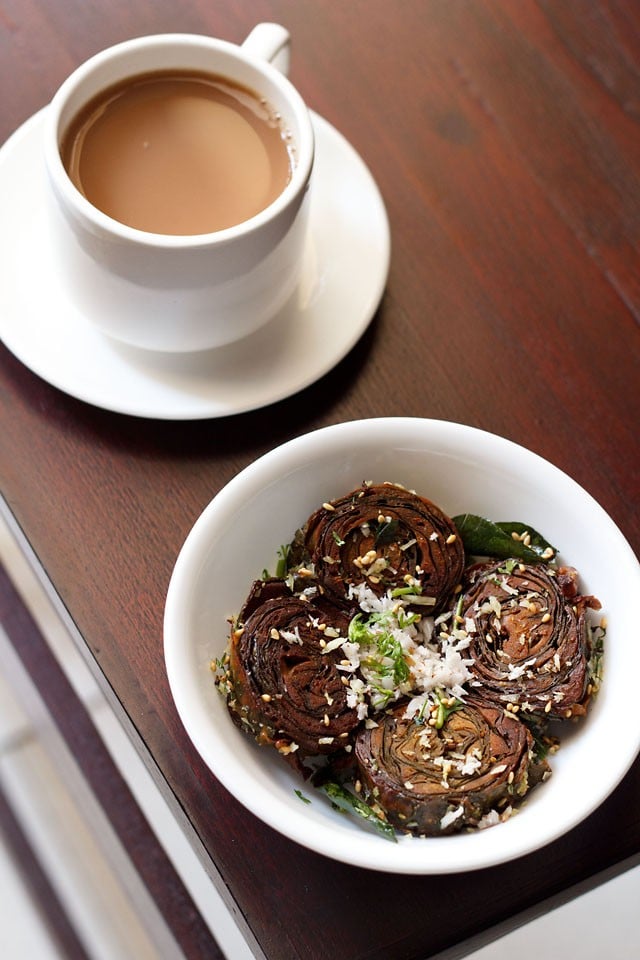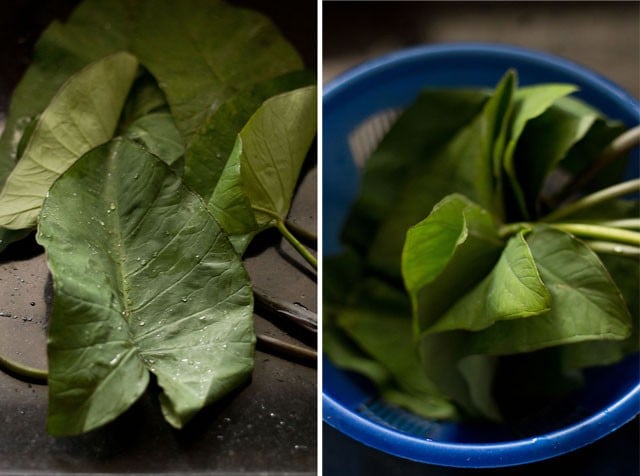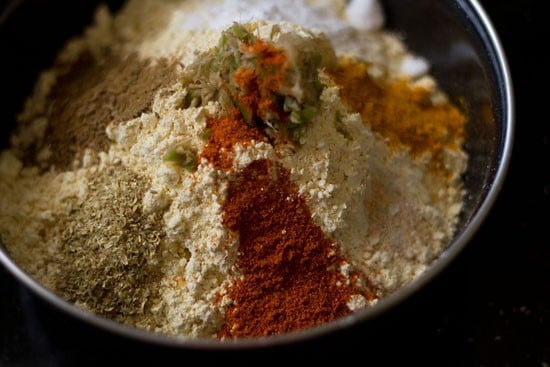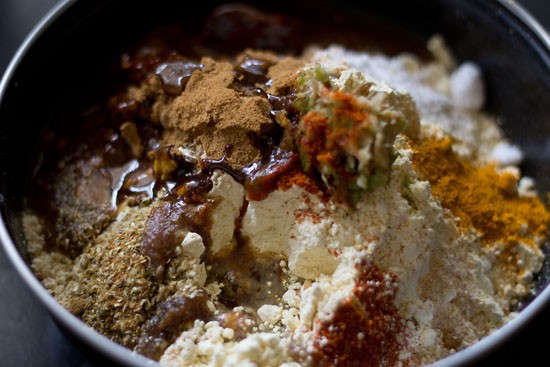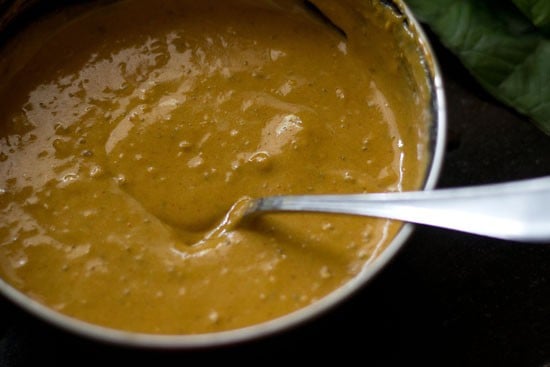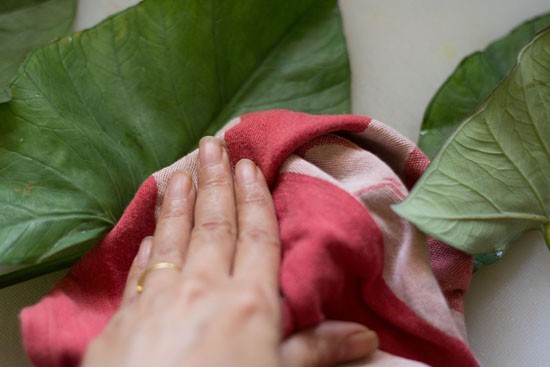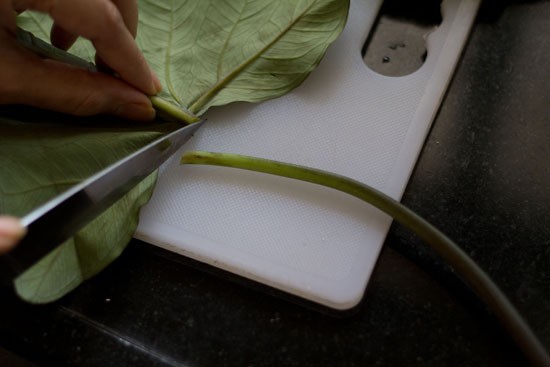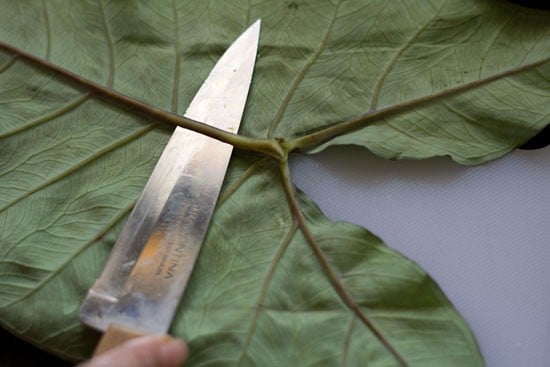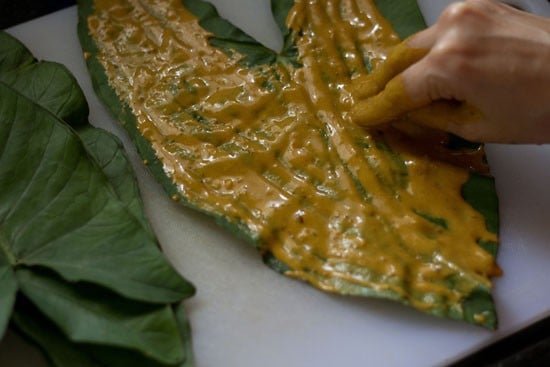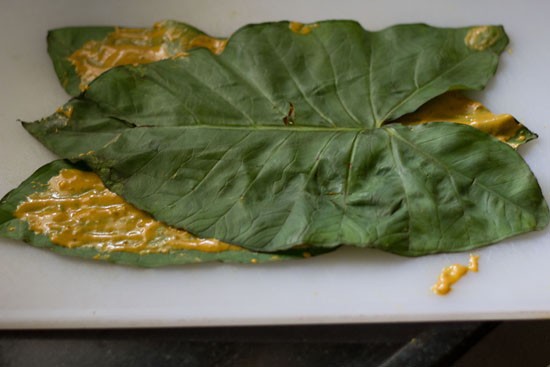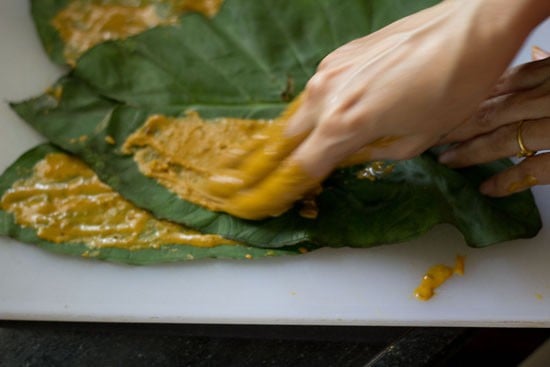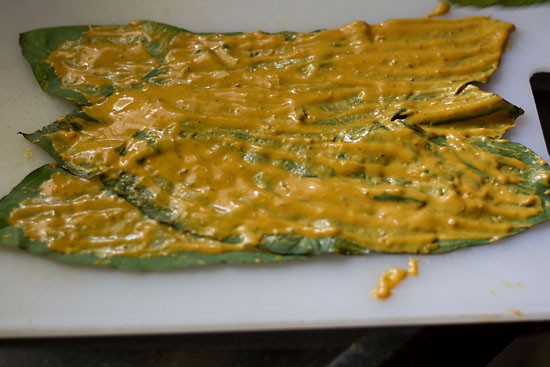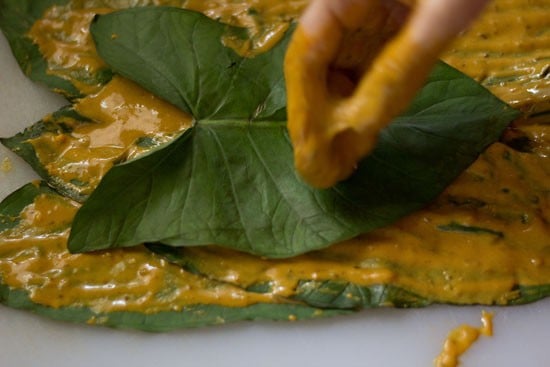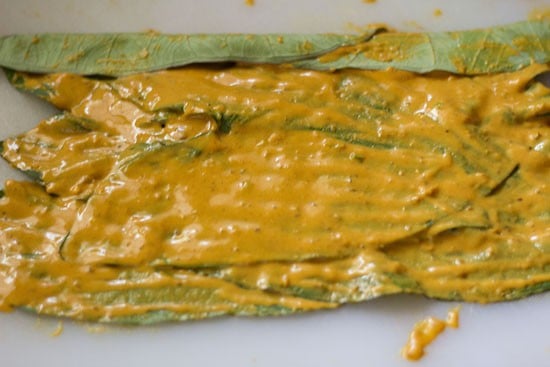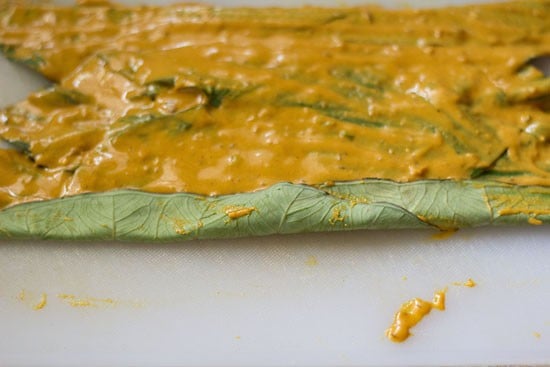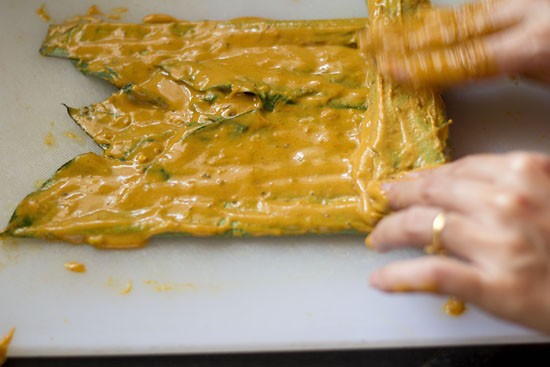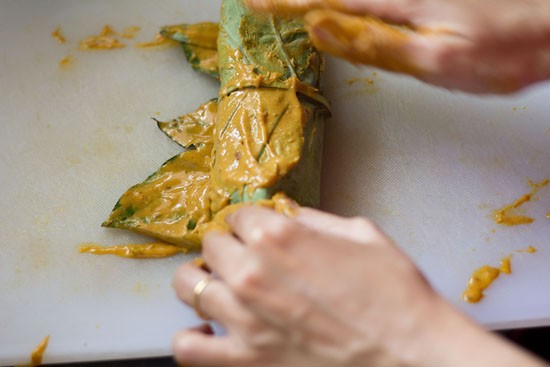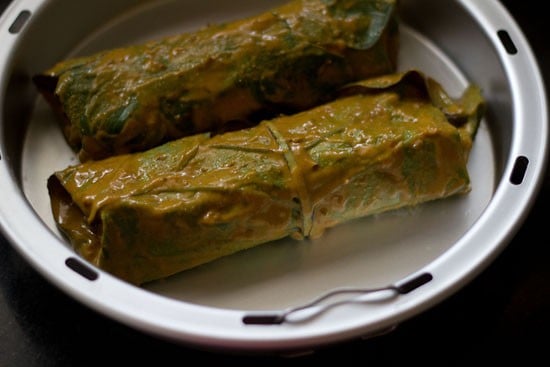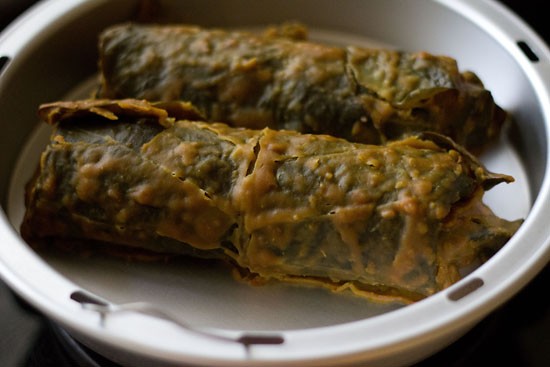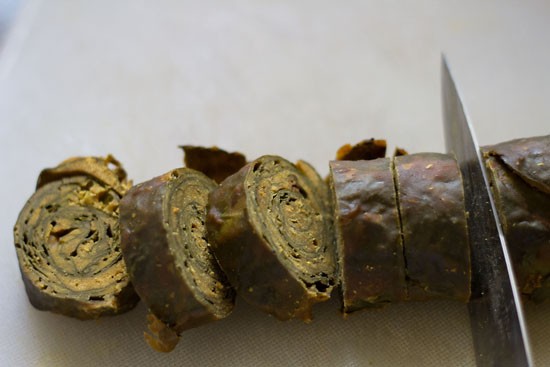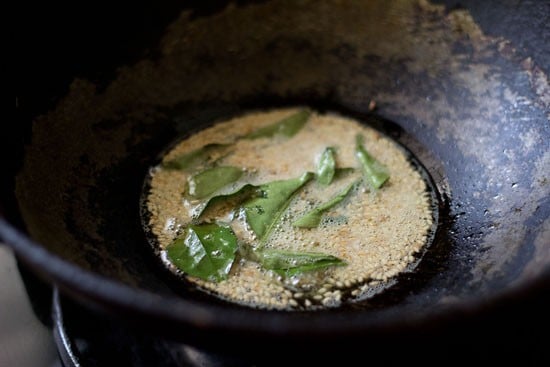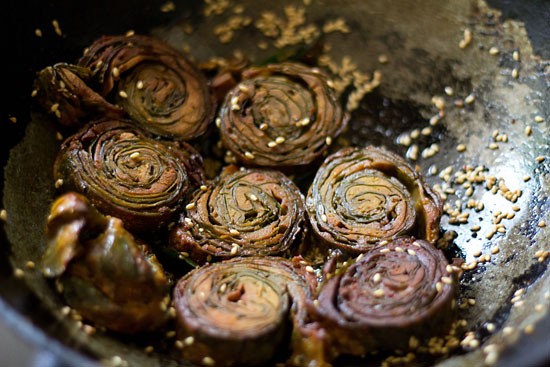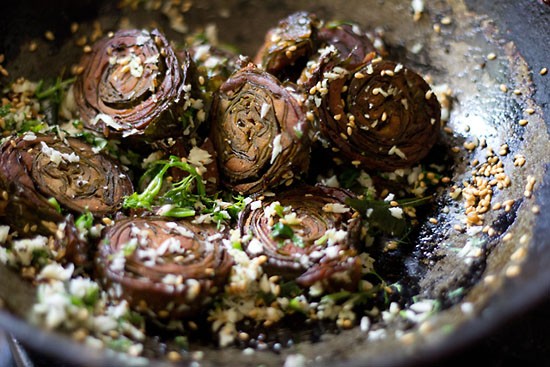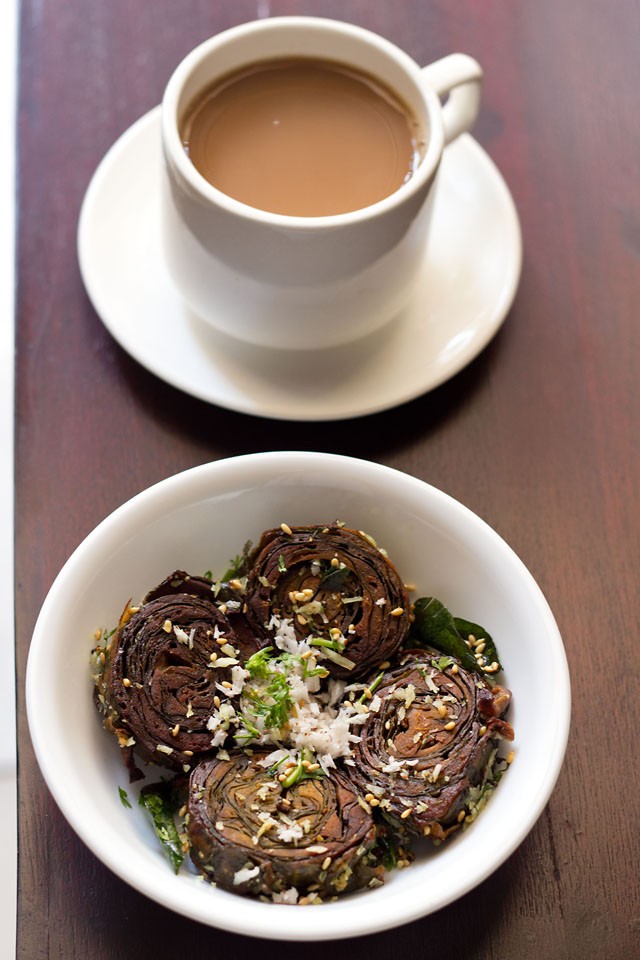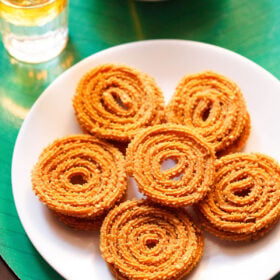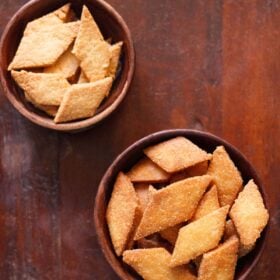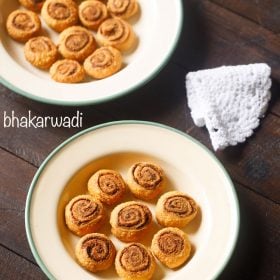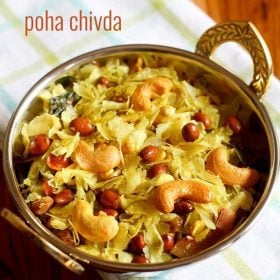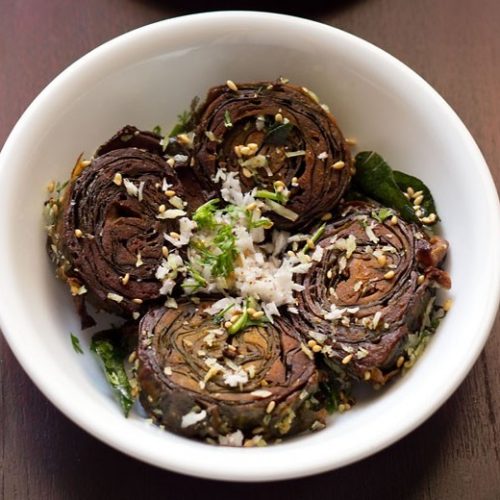What is Alu Vadi
Alu Vadi has nothing to do with potatoes (aloo in Hindi), but everything to do with colocasia, which is known as ‘alu’ in Marathi. As the name of the dish suggests, one of the main ingredients of this preparation is the use of colocasia leaves, which is also known as ‘arbi ke patte’ in Hindi language. Common as the Patra Recipe in Gujarat and Pathrode in coastal Karnataka, this dish is quite intricate when it comes to its making procedure. Thus, it is time taking to prep the entire dish up. But, once you prepare, it can be easily steamed and then tempered. Post which, it is ready to be consumed. Basically, what happens in a traditional Alu Vadi is that fresh, tender colocasia leaves are smeared with a sweet, sour and spiced gram flour (besan) paste or batter and stacked on top of each other. Once a set is ready, it is rolled carefully and steamed till the leaves and the batter is cooked. This is followed by slicing the steamed rolls into thick spirals or pieces, which are then tempered with some basic spices and curry leaves. The spirals can also be deep-fried or pan fried. Once done, the stuffed Pathrode spirals are finished with a generous sprinkle of fresh grated coconut and chopped coriander leaves. Hence, the Patra Recipe becomes a super tasty snack, full of flavors and texture. It is also really nutritious, if not deep-fried.
More on Patra Recipe
As I said earlier, the preparation of Alu Vadi does look a little daunting, but it is not difficult. I am sharing some points here that will help you to make this Patra Recipe with ease. You can also my step-by-step pictorial demonstration, which will clear all your doubts on how to go about making this dish:
You have to first layer the taro or colocasia leaves with a tangy and spicy besan paste. Then, stack these up, one on top of the other. Next, you’ll be rolling these stacks and steaming them. Once steamed well, these are thickly sliced and essentially tempered, or even fried. You can make these rolls a day before and then temper or fry them the next day. I prefer the tempered ones. However, you can also deep fry or shallow fry the rolls. When making this dish, always use fresh leaves which are not itchy. The presence of calcium oxalate crystals is the reason for this itchiness on your hands, sometimes even throat and tongue too. So before proceeding with the recipe, check for this bit. You can ask your vegetable vendor also before buying them. You can make the same recipe with large spinach leaves. So, just substitute the colocasia leaves with the palak ke patte and make a yummy variation.
Since monsoon is the season for fresh arbi leaves in India, you should definitely give this dish a try during the festival of Ganesh Chaturthi. Other than this, you can also make the Arbi ke Patte ke Pakode and another Maharashtrian delicacy named Alu Chi Bhaji, which is simply a delicious colocasia leaves gravy. These stuffed vegetarian rolls or Pathrode are best enjoyed plain or with a green chutney. Makes for an awesomely sumptuous tea-time snack as well.
How to make Alu Vadi
Make Batter
- Take all the ingredients of the batter in a mixing bowl:
2.5 cups gram flour (besan) 1 inch ginger + 1 to 2 green chilies made into a paste in a mortar-pestle 1 teaspoon coriander powder ½ teaspoon red chili powder ½ teaspoon turmeric powder 1 teaspoon cumin powder ½ to 1 teaspoon oil, optional salt as required
- Add 3 to 4 tablespoons jaggery powder and tamarind pulp. I soaked 1.5 tablespoon seedless tamarind in ¼ cup hot water for 20 minutes and then squeezed the pulp in the soaked water. Added this tamarind pulp or tamarind water.
- Stir and mix thoroughly to make a thick batter or paste. Ensure there are no lumps. Set aside. If needed you can add a bit of water if the batter looks very thick.
Prepare Colocasia Leaves
- Rinse a few times in water and later pat dry 20 medium to large sized colocasia leaves with a kitchen napkin.
- Slice the stalk from the base of the leaf.
- Place the leaf with the veins facing you and slice the middle vein right through the center, taking care not to break the leaf. Remove any other thick veins from the sides too. Keep all the leaves ready like this. Instead of using a knife (as it might tear the leaf if not used properly), you can also use a belan (rolling pin) and gently roll it on the leaves. This will flatten the veins and leaf will not get cut. You can adjust the pressure as per the thickness of the vein.
Assemble and Make Pathrode Rolls
- Place the leaf with the vein sides facing downwards and the tip facing you. Apply the prepared gram flour batter. Before beginning to roll, sort the leaves and place the largest one at the bottom and continue to keep the medium and smaller ones as you stack them up.
- Now, place another leaf with the tip in the opposite direction. Placing the leaves in the opposite direction helps them to roll easily.
- Apply the batter on the second leaf.
- Completely cover the leaf with the gram flour batter.
- Now, place a third leaf with the tip facing you. 12. Apply the batter on this leaf too.
- Finish off all the 10 leaves this way. Now fold the leaf from one side as shown in the picture below.
- Apply the batter to the folded side and fold from the opposite side also. Apply batter to this second folded side too.
- Begin to tightly roll the leaves and keep on apply the batter with each fold on the top.
- Almost finished rolling the stack of leaves.
Steam Alu Vadi
- I made 2 rolls from 2 batches of 20 leaves. Each roll had 10 leaves. Place these rolls in a greased steamer pan. Steam for 20 to 25 minutes in a steamer or pressure cooker without the vent weight or whistle.
- The leaves and the batter will be completely cooked. The rolls will also hold shape and become firm after cooking.
- When warm or cooled, cut the steamed pathrode rolls into ½ inch thick spirals.
Make Tempering
- Heat 2 tablespoons oil in a pan or kadai (wok). Keep heat to low or medium-low. Add 1 teaspoon mustard seeds and let them crackle on low to medium-low heat. Then add 10 to 12 curry leaves, ¼ teaspoon asafoetida (hing), 2 to 3 teaspoons white sesame seeds. Fry for some seconds until the sesame seeds crackle and the curry leaves become crisp.
- Add the sliced colocasia rolls and sauté on low heat for few minutes turning as needed. They will start to look crisp and get golden.
- Switch off the heat. Lastly, add ¼ cup grated fresh coconut and 2 tablespoons chopped coriander leaves. Stir and mix gently.
- Serve Alu Vadi or Patra hot or warm. You can also garnish the Pathrode with coconut and coriander leaves instead of mixing them with the rolls. Please be sure to rate the recipe in the recipe card or leave a comment below if you have made it. For more vegetarian inspirations, Sign Up for my emails or follow me on Instagram, Youtube, Facebook, Pinterest or Twitter. Chakli Recipe (Instant & Easy) Shankarpali Recipe – Sweet & Savory Shankarpali Bhakarwadi Recipe | How To Make Bhakarwadi | Bakarwadi Recipe Chivda Recipe | Poha Chivda | Namkeen Recipe This Alu Vadi recipe from the archives first published in September 2013 has been republished and updated on December 2022.
